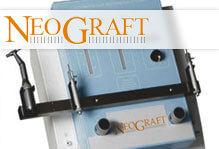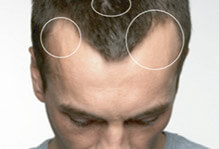History of Hair Transplant Surgery – From Strip Surgery to FUE
As early as the 19th century, surgeons were performing “flap” surgeries in which an intact part of the scalp is repositioned to the bald area. Modern hair transplant techniques actually first began in Japan in the 1930’s. Japanese surgeons were using small grafts, even follicular unit grafts to restore eyebrows and eye lashes. At first they were not treating baldness. These amazing advances were not recognized worldwide for several more decades mostly because of World War II.
In the western world, the modern era of hair transplant began in the late 1950’s, when New York dermatologist Norman Orentreich, demonstrated that you could transplant small grafts into a balding area and the hair would grow as it did in the original area. This we now know as “donor dominance”.
Expanding the theory of donor dominance was Dr. Walter Unger. He found and defined “safe zones” from which donor grafts could be taken from. The back of the scalp, from which most donor hair is now taken from, would be considered a safe zone.
For about the first 20 years of hair transplant in the US, donor graft were about 2-4 mm in diameter. These graft grew in the new area, but because of their relatively large size, they gave the patient an unnatural “doll’s hair” or “pluggy” appearance.
In the 1980’s, doctors in the US and Brazil started to taking “strips” of scalp form the safe area and then dividing out small groups of hairs. These grafts were small enough to give a natural appearance.
This “strip surgery”, also referred to as Traditional Hair Transplant, was the gold standard for hair transplantation over the next decade.
Modern Hair Restoration Surgery (Follicular Unit Extraction)
In the late 1990’s, a few hair transplant surgeons began experimenting with going back to taking individual grafts vs. strips. However, this time they started taking very small graft using 1 mm diameter needles. These 1 mm grafts each contained only one hair follicle. By the early 2000’s they had perfected this technique and modern follicular unit extraction (FUE hair transplant) was born.
Automated FUE (NeoGraft and Artas)
In 2009, NeoGraft, the first automated device for harvesting follicles was cleared by the FDA. The NeoGraft device uses a motorized punch to first separate the follicle from the surrounding tissue and then uses negative pressure to extract it. The NeoGraft hand piece is operated by a doctor or technician. In 2011, Artas, was the first robotic device to be approved for hair transplantation. The extracting device uses a robot with camera system to choose and harvest each follicle.
Houston Hair Transplant Center offers only NeoGraft, as we feel the robotic harvesting technology is not yet superior to a skilled NeoGraft technician.



